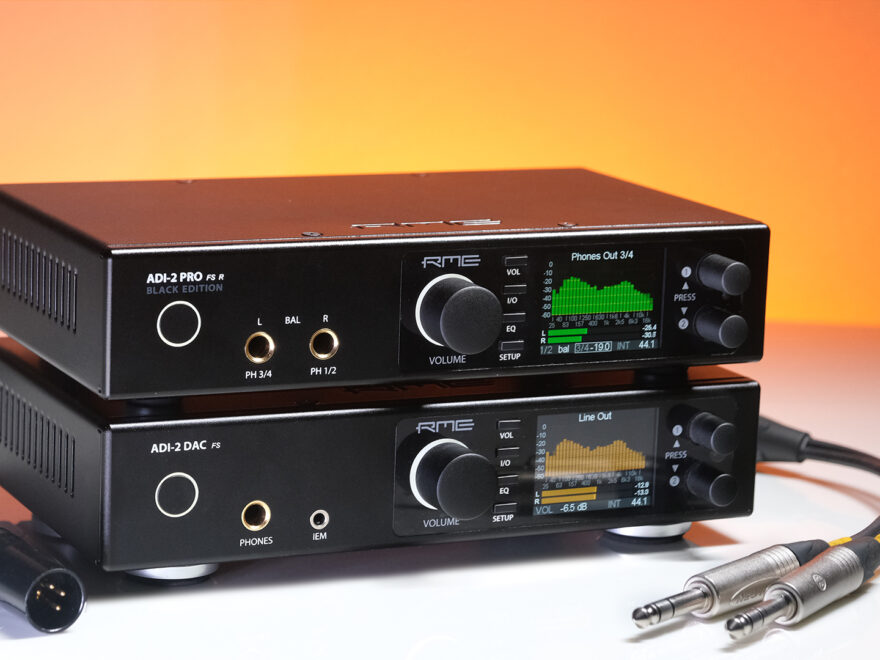EQUALIZER
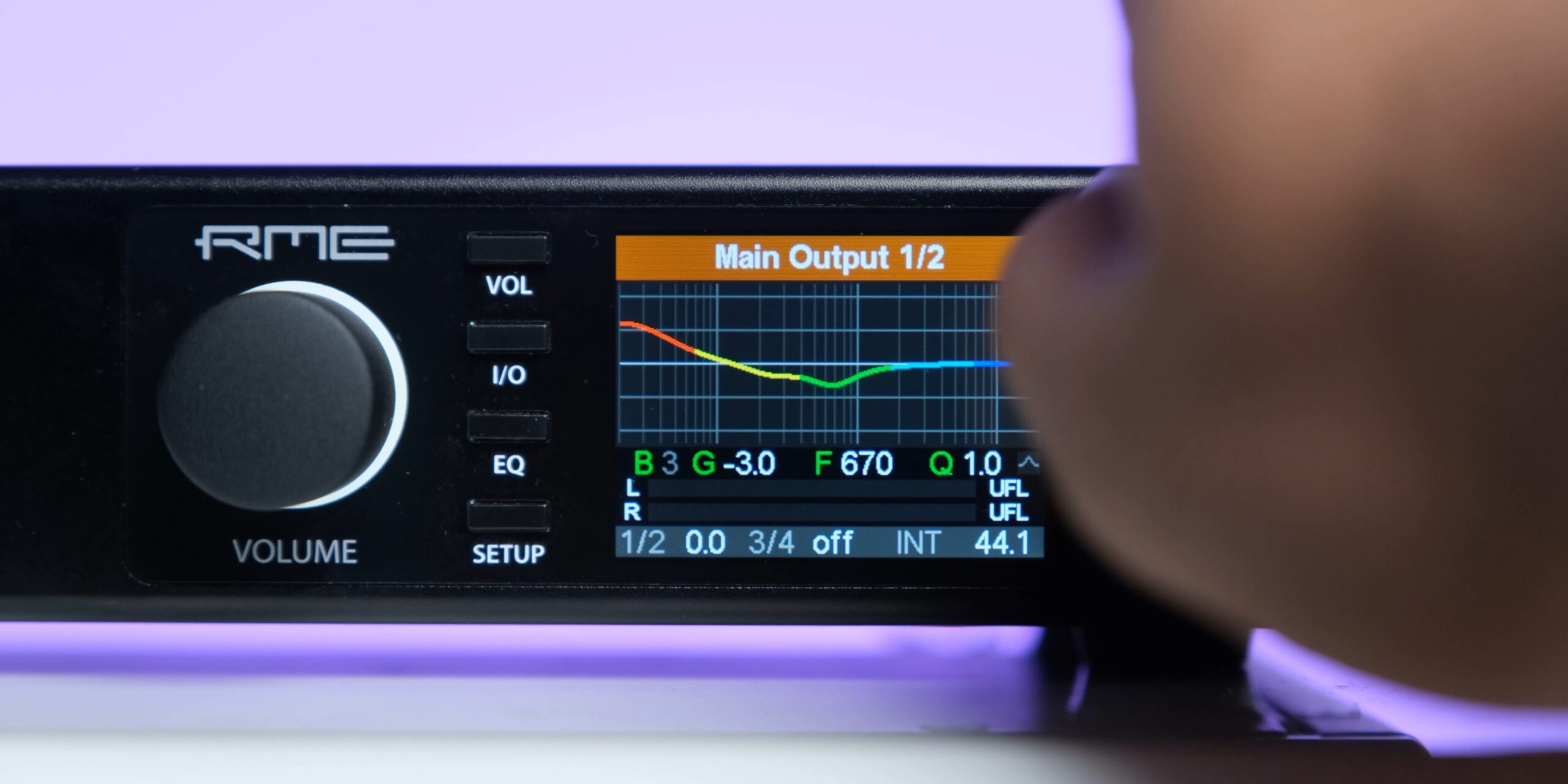
One of the main reasons that got me interested into these RME devices is the 5 band parametric EQ present on both of these. Some of the headphones I have like the HE-4XX are just not enjoyable for me without using EQ presets, and you can improve the sound quality of almost all of the headphones with EQ. While you can use software solutions for this, they may not work in all use cases, and having hardware level PEQ is much better and convenient.
The equalizer can also be used to add room correction to your speakers, which really makes the speakers sound much cleaner, and once you start using it, you really cannot go back.
The ADI-2 Pro also supports Dual EQ, so you can have separate room correction settings for your left and right speaker, and for people with hearing problems who hear a little differently from one of their ears, this can also become an amazing addition.
You can store 20 EQ presets on it, and rename them, so this is really going to be enough for most people’s headphone and speaker collection.
Different presets on different outputs on this device also get applied automatically when you change outputs, so my Adam A5Xs always have room correction applied when audio is playing through them, and as soon as I change the output to my HEDDphone, the EQ preset specific to it gets applied, and this is why I didn’t want to buy an external amplifier with the ADI-2 DAC, because if you use something like the Mackie Big Knob to switch the XLR output between a speaker and a headphone amp, the ADI-2 devices won’t detect that you have done so, so everytime you change outputs, you will also have to change the EQ preset, and that really makes life much more complicated than it needs to be, so the single box solution of the ADI-2 Pro just works perfectly.
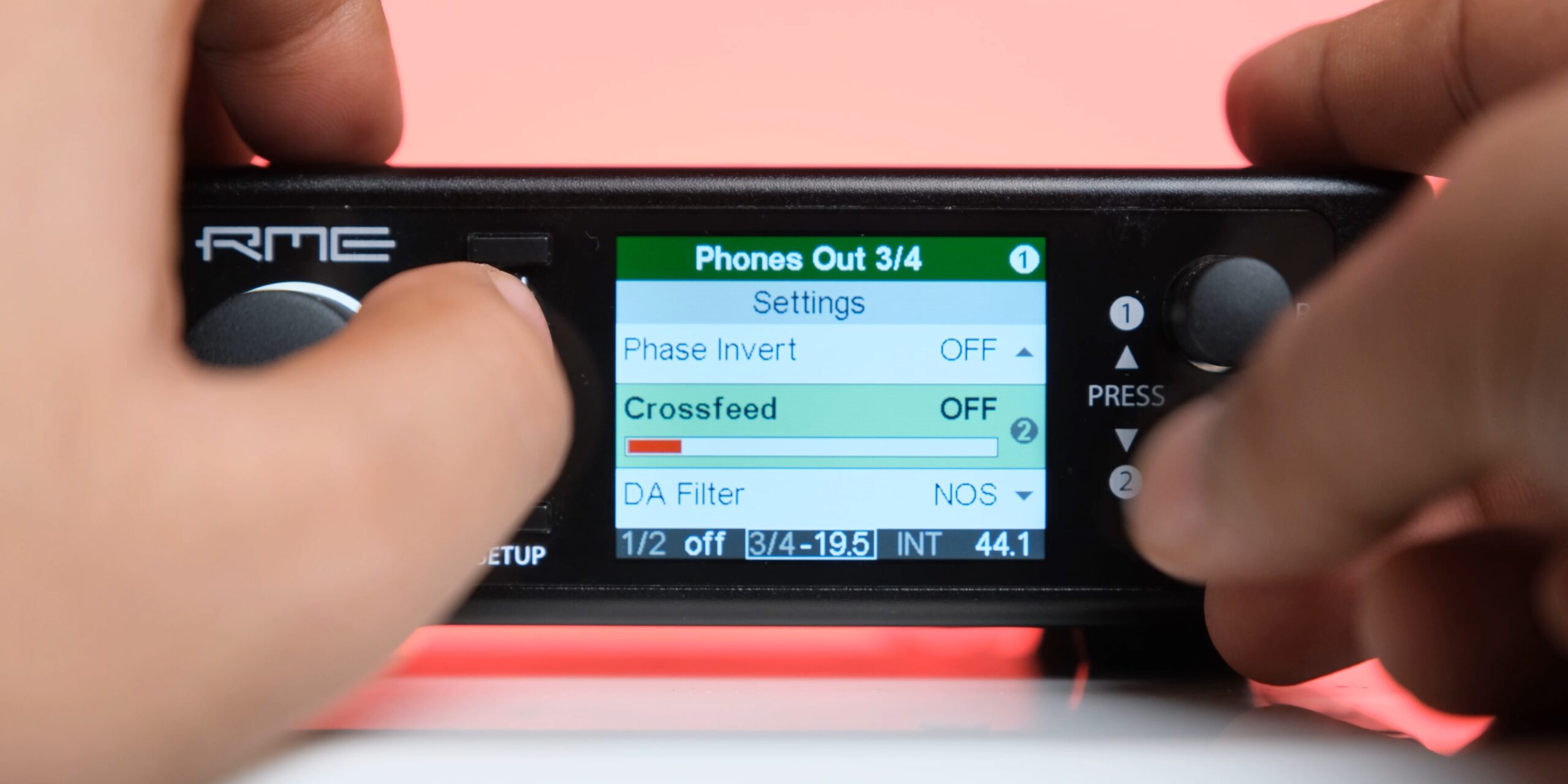
ADI-2 Pro also has features like crossfeed and loudness that I’ve talked about in detail in the ADI-2 DAC video, and you can also do things like changing the width of the sound, and inverting its phase.
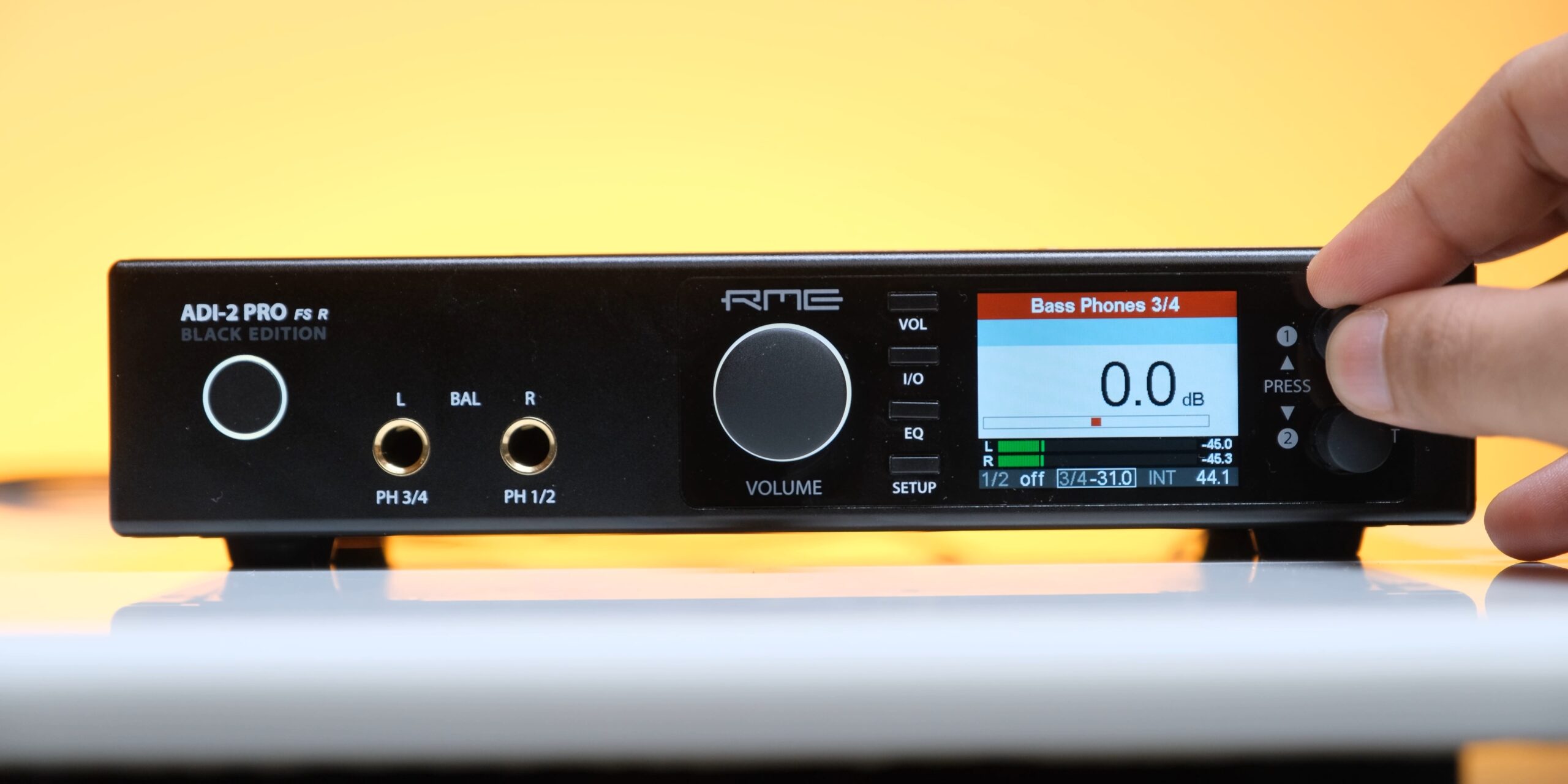
The bass and treble function of the ADI-2 Pro can also be used to add 2 more bands to your PEQ as their frequency and Q value can be customized, so you can have 7 band parametric EQ if you are a really big audio nerd.
DAC Performance
And that takes us to the performance of the DAC on these devices, which is identical between the ADI-2 DAC, and the ADI-2 Pro, and these are really top tier performers, again with their Steady Clock FS technology which you can learn more about in this video by clicking on the card, the ADI-2 DAC has 1 AKM4493 Chip, while the Pro has 2 of them, and there’s a lot more than just the DAC chip number to what kind of sound you actually get, so if you’re watching this in the future and they have some new chip in it, this review should still be very relevant. These are 32 bit 768 kHz DSD Direct capable devices, which is of course really high end.
I have mentioned in my ADI-2 DAC review how people struggle to describe the audio quality differences between the ADI-2 DAC, and the similarly priced Chord Qutest which is only a DAC, (text: and I don’t think that the ones who say that the Qutest is more laid back and natural compared to the RME have tried its NOS filter,) and again, the ADI-2 devices are aiming for highest accuracy in their presentation, without adding any color, because these are pro audio devices.
Now when we’re talking about the ADI-2 Pro, at $2000 dollars, maybe you could get something that is only a DAC that sounds a little better, but you REALLY have to think about how much of a difference you would be able to hear, and I’d highly recommend that you audition a $2000 dollar DAC and compare it to this before making the decision if you’re confused.
With my Adam A5Xs that don’t have DSP crossovers, the imaging with the ADI-2 Pro and the DAC is really exceptional, and you really get that 3D holographic image that I have praised these speakers for. With my HEDDphones, the DAC performance is again very excellent, and I get a very accurate soundstage, with a very detailed and natural sound.
Filters
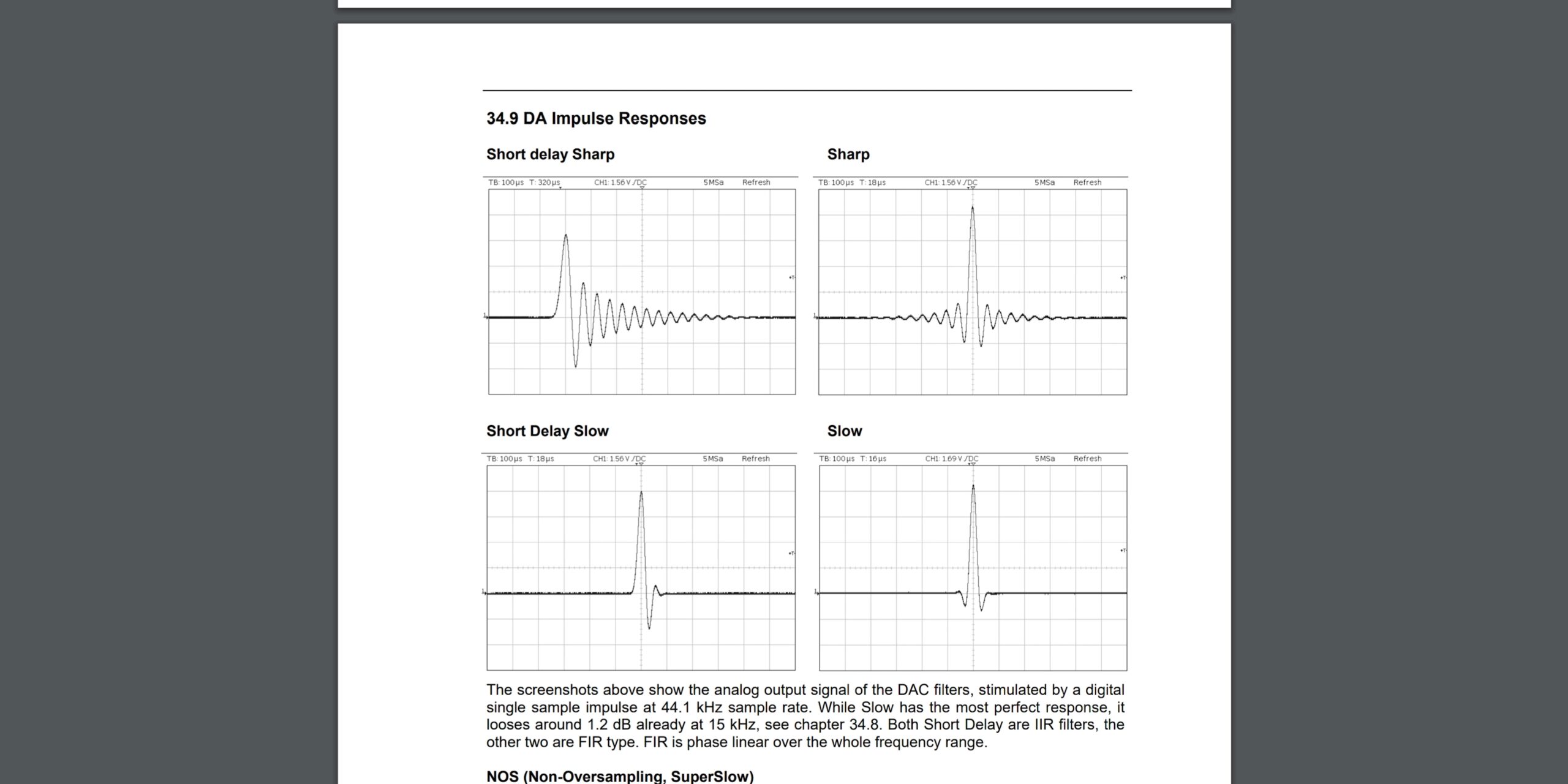
The ADI 2 Pro also includes different filters for its DAC, and its ADC, and I wasn’t able to hear a difference between these filters with my HE-4XX earlier, (text: apart from the roll of in the treble response with NOS filter), but with the extremely resolving nature of the HEDDphone, the difference between the Non oversampling filter and other filters like Sharp is quite noticeable, and the non oversampling filter is what I mostly use with the HEDDphone now, because the vocals on it sound more natural, and anyone who finds these DACs to sound too analytical should really give this filter a try, because even though it does sound a little less detailed than other filters, the smoothness and the more natural presentation is something that some people would buy a different DAC for, so even though I didn’t consider this choice of filters to be that important earlier, I do think that having a non oversampling filter is a great addition.
ADC
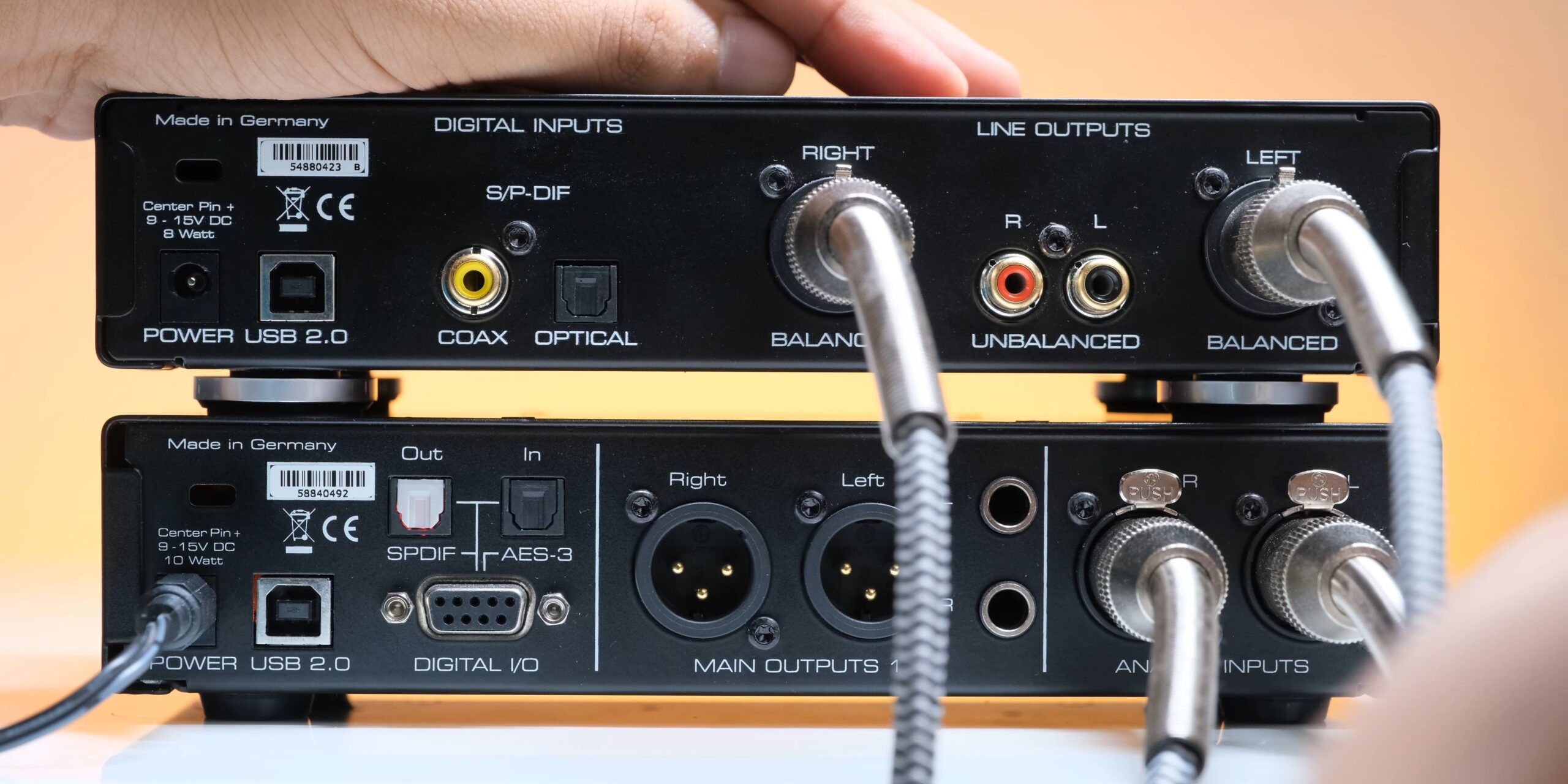
The ADI-2 Pro also features a very high quality ADC at its back, and it really has many applications. So one use case for it is using it as a pre-amp, which means that you can connect any other analog source to it and it can output that through its analog outs with amplification, so you can connect a turntable to it on which you can also use Equalizer, and you can have room correction on any source that you connect to it. It will be re-digitizing everything, but you can just check what sounds better.
To test the quality of the ADC, I plugged in the line outputs of the ADI-2 DAC to the ADI-2 Pro’s analog inputs, and the sound quality, even after the additional AD/DA cycle, was very surprisingly great. (text: using hotkeys in foobar, I compared the sound quality directly coming from the ADI-2 Pro via USB vs the ADI-2 DAC’s signal being converted to digital, then to analog again and playing back on the HEDDphone)
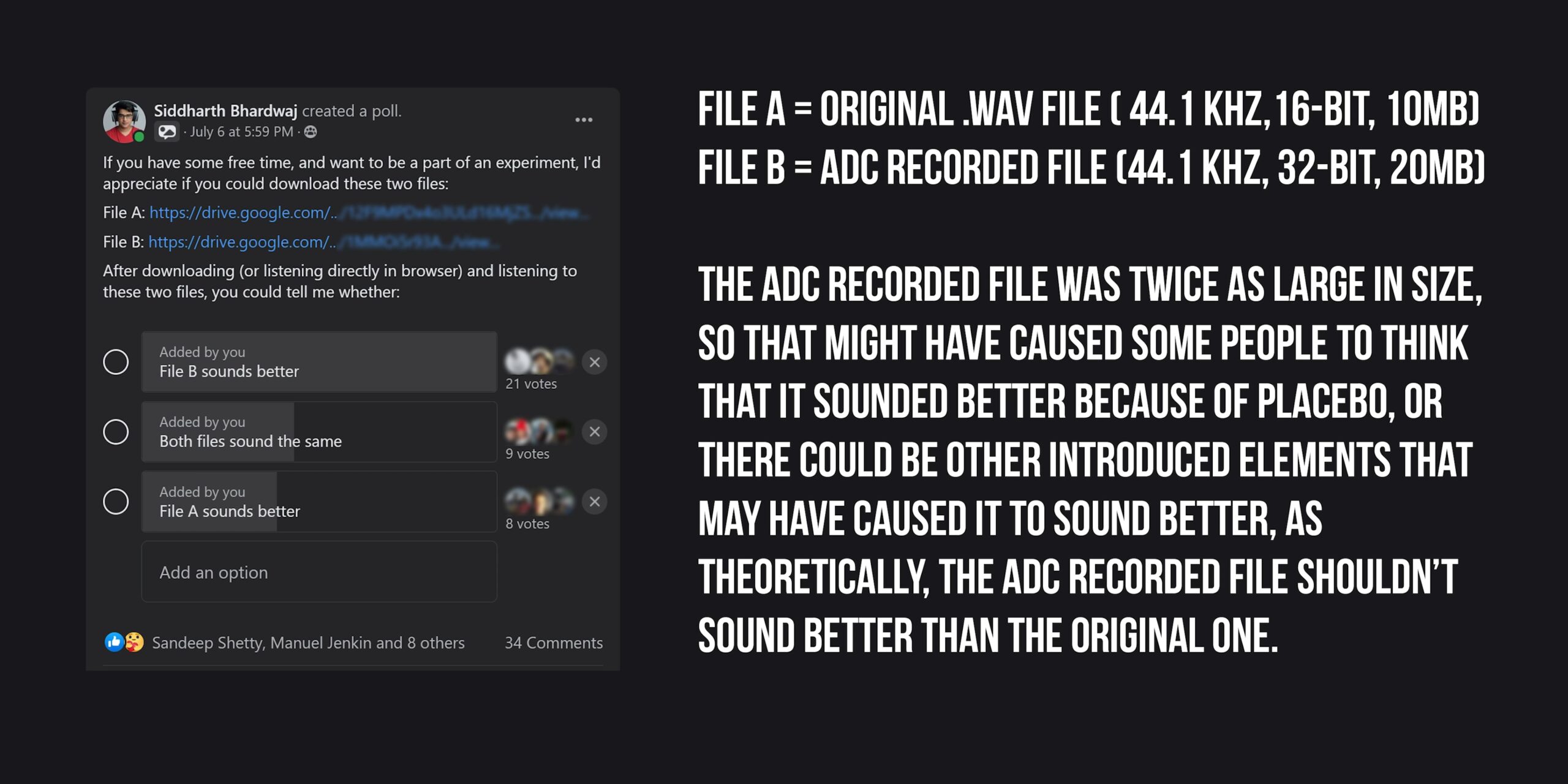
Then I also recorded a FLAC track with WASAPI playback with Adobe Audition and saved it as a WAV File, and then AB-X compared both of the files to see if I could hear one file being played with any loss in quality (text: with both files being played directly on the ADI-2 Pro), but I was not able to tell which file was the original, and which file was re-recorded with the ADC.
So to re-check that I wasn’t the only one who didn’t hear a difference, I also posted both of these files in my audiophile group, and asked people which of the two files sounded better, and in a very surprising turn of events, the ADC recorded file got the highest votes. (The ADC recorded file was twice as large in size, so that might have caused some people to think that it sounded better because of placebo, or there could be other elements that may have caused it to sound better, as theoretically, the ADC recorded file shouldn’t sound better than the original one).
So with that we can definitely conclude that the file recorded with ADC doesn’t sound noticeably worse than the original file, which was a surprise for me, as I always thought that adding a DA-AD (text: digital to analogue, analog to digital) cycle would make the quality noticeably worse.
This was recorded at only 44.1 kHz, which I think is the wrong way of recording, but I think that the ADC on it can record at upto 768kHz, and it can also record in DSD, so you can have your vinyl collection recorded in extremely high quality.
I will actually include links of a demo track with its original file, and the files recorded with the ADC of the ADI-2 Pro, so you can download them, and check out if you can tell a difference between the two files, and do let me know your experience in comments.
So with how good this ‘world class’ ADC is, it is not a surprise that it can also be used for measurements of audio equipment, so the next time I review a DAC, I could include its measurements.
So audio engineers, reviewers, musicians, and producers can of course take advantage of this, but another use case that I was interested in was recording voice overs for my videos on this, and that is also possible if you have a powered source like this Rode Wireless Filmmaker Kit, so this audio that you’re listening to has been recorded with the ADI-2 Pro’s ADC, and you can see that you can also monitor the ADC through one of the screens.
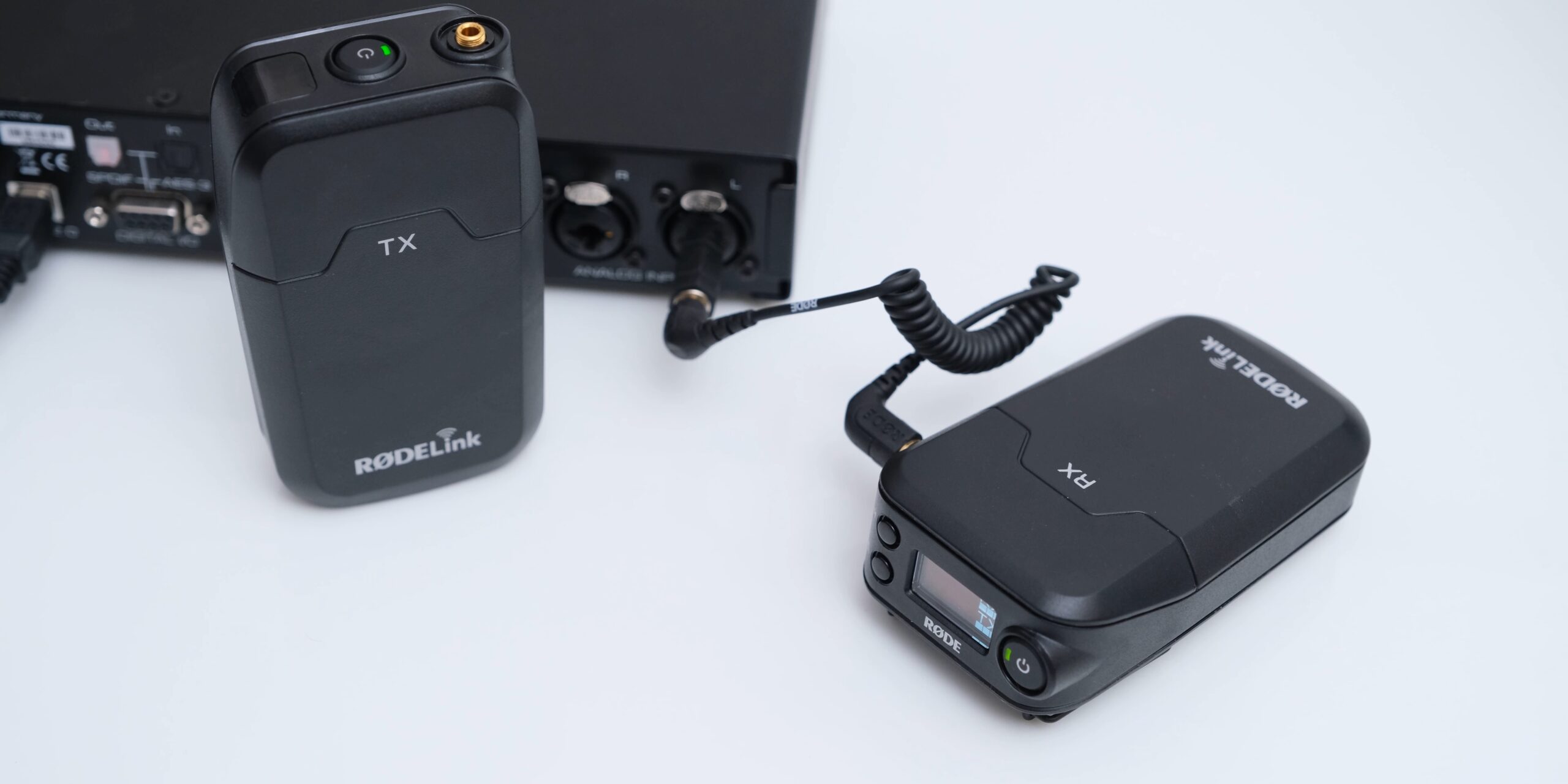
Now this isn’t a microphone preamp that many people may assume it to be, so if you want to plug in an XLR mic, or an electric guitar, you will have to add a mic preamp in between.
The reason that we don’t have a mic preamp with 48 volts phantom power here is that there was just no space left on the PCB, because this is already an extremely densely packed device. If RME had to add mic preamps to this device, they would also have to add something very high end, which would make this device significantly more expensive, and considering that this is already not a cheap device at all, I am personally okay with that.
But you can of course easily add a mic preamp, and connect it to its analog ins, and for my use case, an entry level mic preamp like the ones in this Focusrite Scarlett work very well, so if I want to plug in a guitar and play something, I can do that.
I can also directly record my digital piano to this, so there are tons of use cases for the ADC for a lot of people.
Software
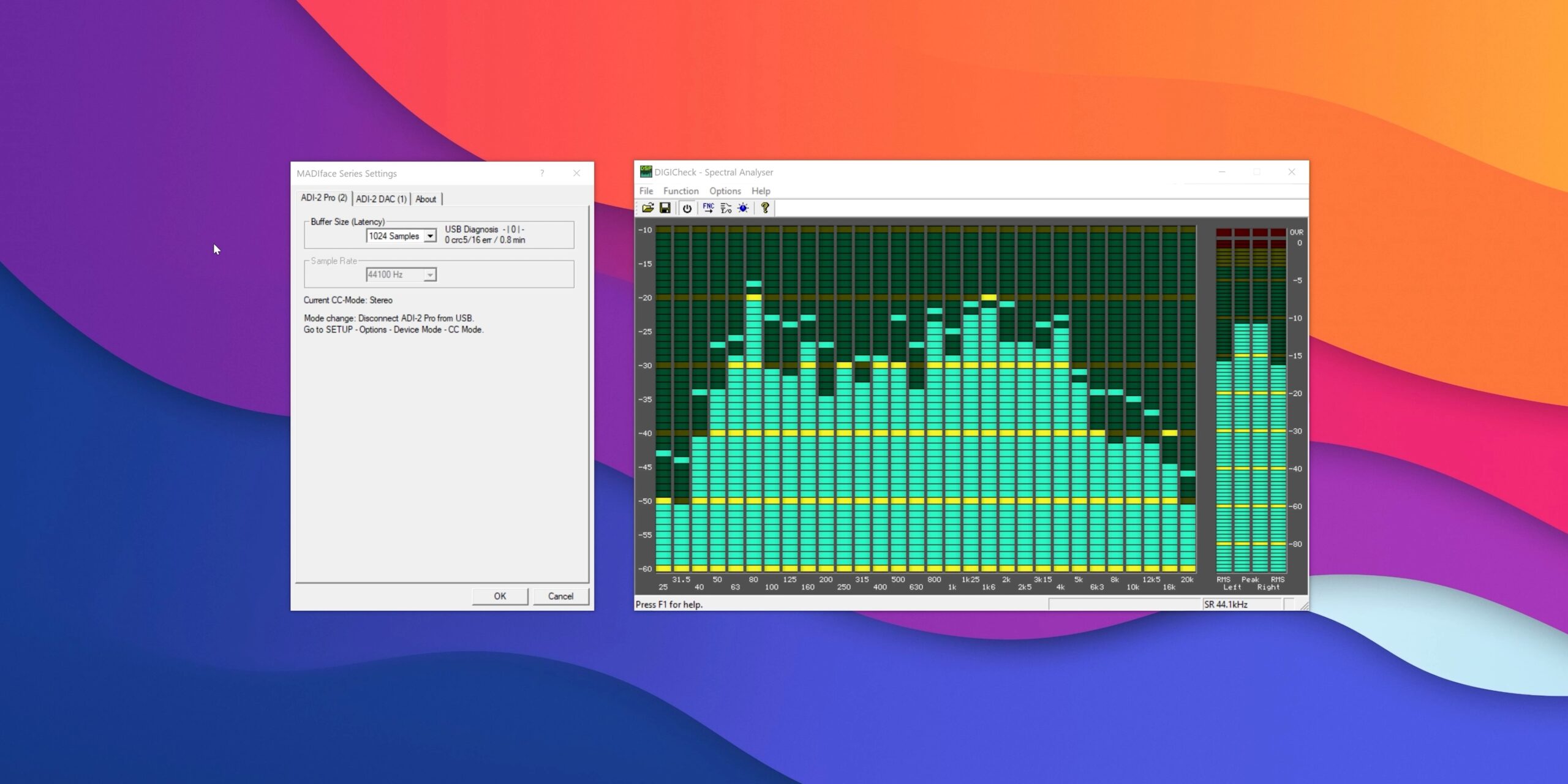
RME’s MADIface drivers for the ADI-2 series are also really great, in addition to providing error checking for USB, they also have really good compatibility, and with programs like Foobar, you can also use advanced channel mapping to send the same audio signal to ADI-2 DAC, and ADI-2 Pro, so you can compare 3 or more headphones if you have multiple RME devices, which is very useful for headphone reviewers or people who design headphones.
Conclusion
So in conclusion, while the ADI-2 DAC had impressed me by the options it offers over any other device that I had used, the ADI-2 Pro is even more surprising of a device to use, because I really didn’t think that a single device like this could have SO MANY use cases.
The top tier performance is what I was expecting from it, but the sheer intelligence and thought that has gone into making this device is really something that I cannot overstate the impressiveness of.
RME doesn’t give you vague snake oil statements about their technology to tell you how revolutionary their products are, but they give you scientific explanations and numbers and logic.
This isn’t a device that is as easy to use as other DACs, but it is something that makes you learn more about things.
It demands you to be more attentive than you have to be with other products, but then, it also rewards you for the knowledge that you have by allowing you to shape your audio experience in the exact way that you want it to be. It shows you why the Germans are considered to have the most refined taste in Engineering.
ADI-2 DAC vs ADI-2 Pro:
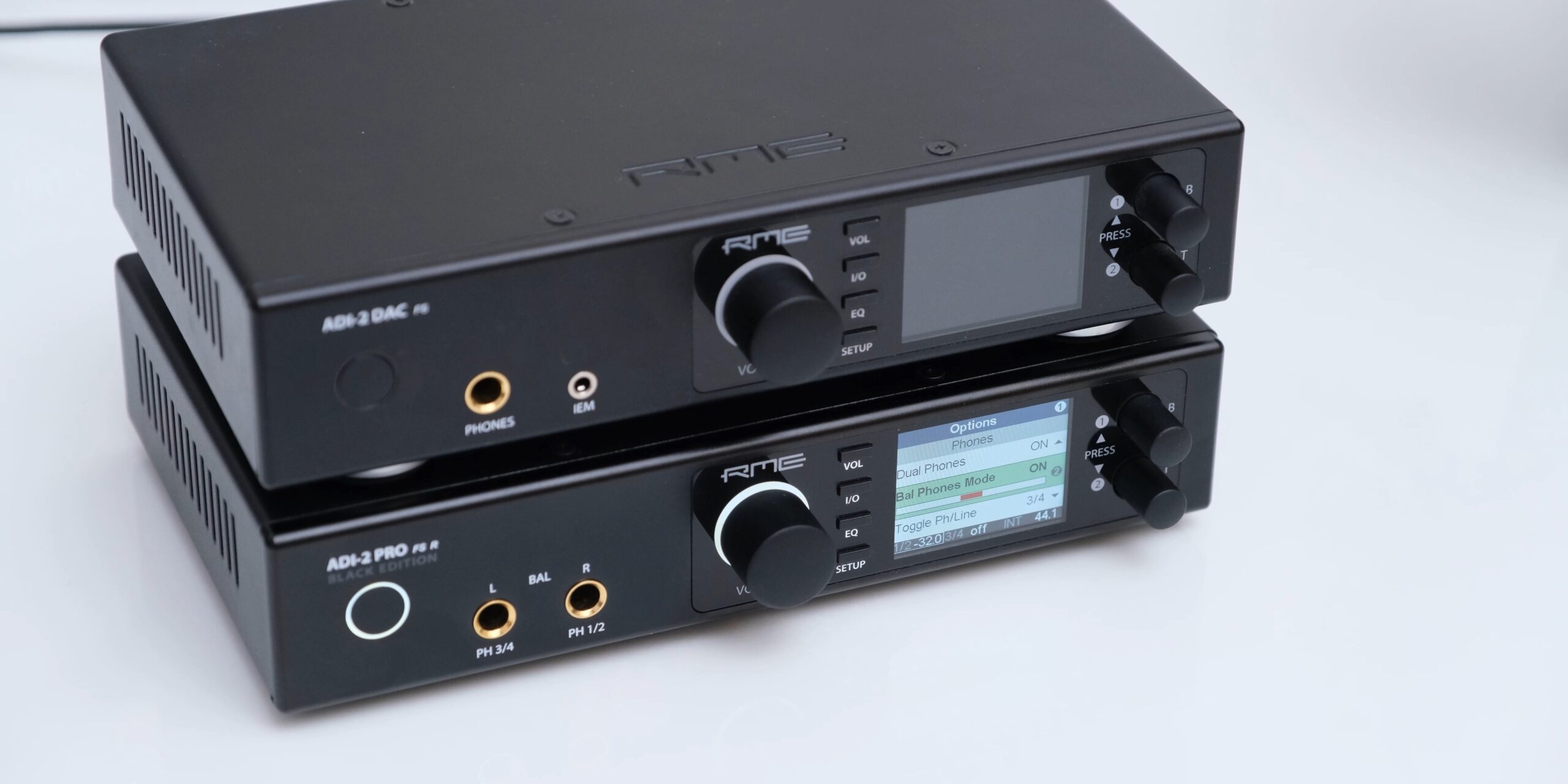
Now when it comes to deciding whether to go with the ADI-2 DAC or the ADI-2 Pro, the ADI-2 DAC is obviously a more straightforward device for audiophiles, and it even has a super low noise IEM port for the more sensitive of the IEMs. I personally find the headphone jacks to perform very well with the IEMs that I have, but I’ve also heard that some earphones like the Campfire Andromedas do have audible noise with the headphone jack, so if you use a lot of IEMs, and you don’t want the extra feature of ADI-2 Pro, then the ADI-2 DAC obviously makes more sense.
But if you need something that is even more powerful, or you want to have a balanced headphone amplifier, not needing to add another box to your setup is something that I personally value a lot, and if you were to buy an external headphone amplifier to add to the ADI-2 DAC that performs as well as the balanced out mode of the ADI-2 Pro, it will be taking the total cost quite close to that of the ADI-2 Pro, so even if you don’t need it’s other features, this feature alone could be worth considering to jump up to the ADI-2 Pro for.
The ADI-2 pro also offers a completely independent 2nd DAC chip which can have many use cases for audiophiles, you can have 2 extra speakers or a subwoofer attached to it. Even if you are not a headphone reviewer, you could audition different headphones and compare them to your existing headphones, the ADI-2 Pro has AES out, which could become very useful with those higher end studio monitors, it offers WAY better SPDIF and Coaxial out than your motherboards optical port, and you may not have a use case for these features now, but having the ADI-2 pro will keep you prepared for anything that you may get your hands on, so this is a device that will really future proof your audio setup, and for that reason, I think it is completely worth it to jump up to the ADI-2 Pro FS R BE, if it is affordable for you, because getting top tier components of multiple types with 2 DAC chips in such a compact single box unit really makes it a very good value for money, even at its very high price tag.
Now just like other components, the stocks of these DACs are a little limited currently due to the global situation, and prices have also increased a little, so it’s not just computer components that are being affected due to the Global Chip Shortage, but the good news is that Ansata is offering a discount on these RME devices, and if you use this coupon code on the screen while ordering, you will be able to get a 5% discount, which on a 1.75 lakh rs. Product can become a lot.
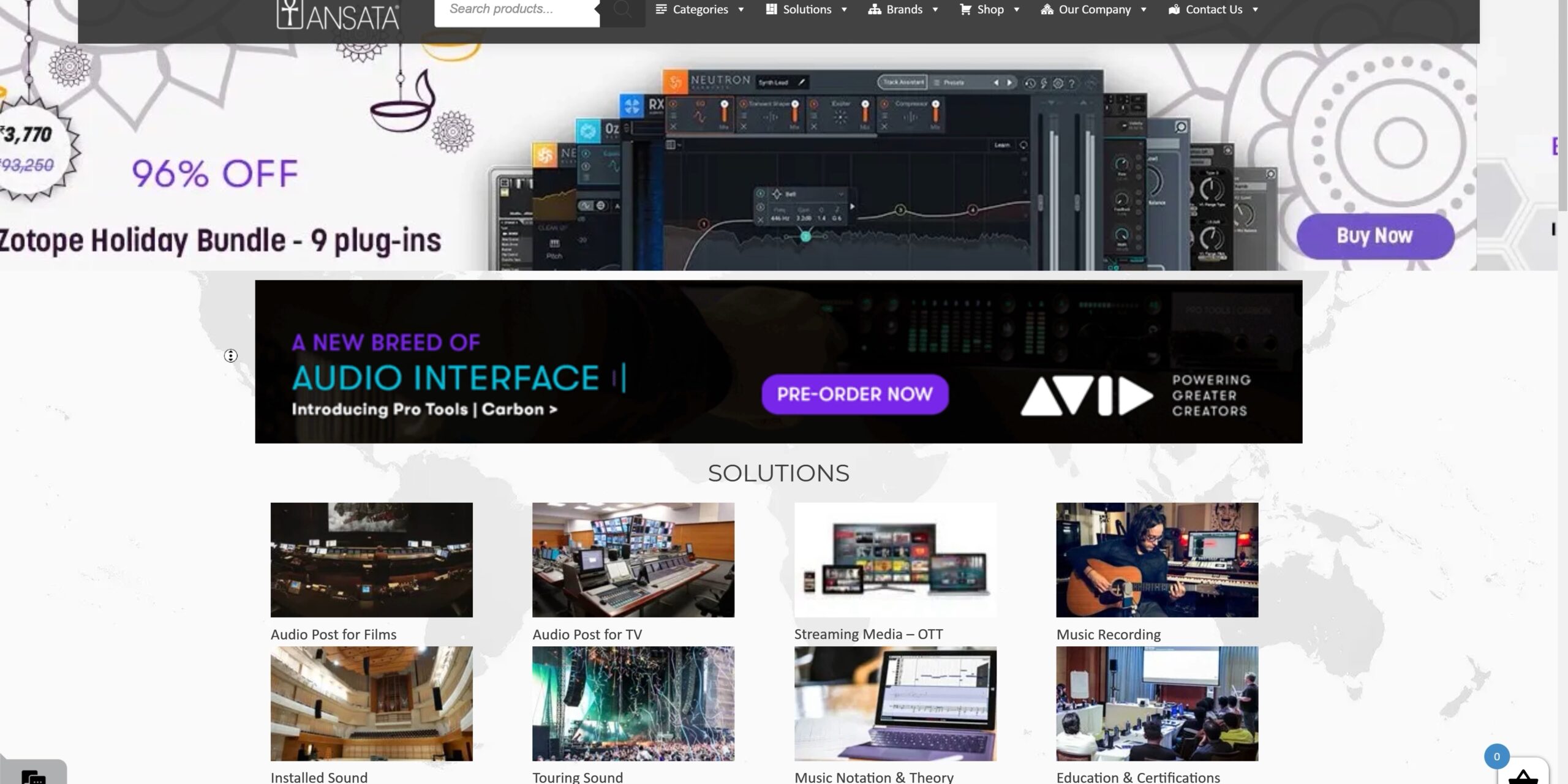
Ansata is the official distributor for RME Products in India, and I bought both of these devices from them, and if you frequently buy high end pro audio gear, they are a name that you must be familiar with.
⭐ Buy RME ADI-2 Pro FS R BE on with 5% Discount: https://bit.ly/3kyHwra ✨ Apply Coupon Code SIDBHARAD During checkout
⭐ Buy RME ADI-2 Pro in US: https://amzn.to/3eA7wyR
